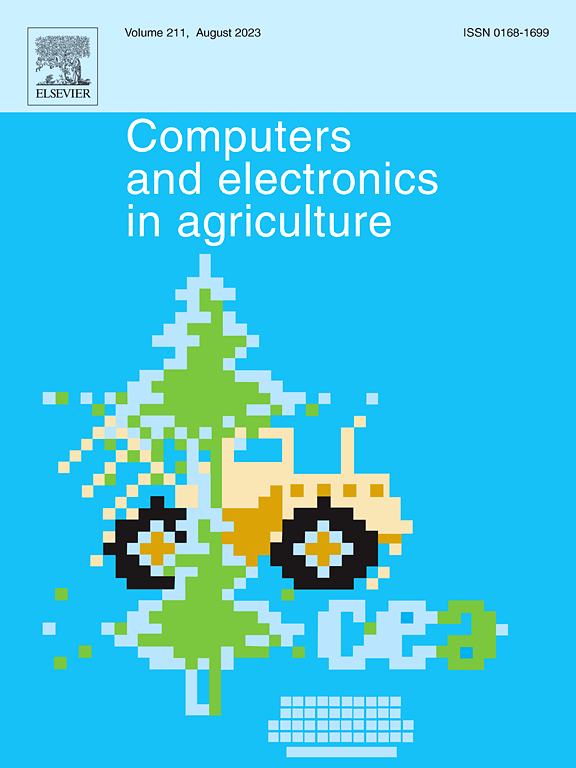Predicting the 3D bone structure of pork shoulders using X-ray imaging and statistical shape modeling
IF 8.9
1区 农林科学
Q1 AGRICULTURE, MULTIDISCIPLINARY
引用次数: 0
Abstract
In the meat industry, deboning and cutting are essential processing steps often performed by humans. To automate these processes it is essential to understand the complexity and variability of their three-dimensional (3D) shape as well as the relationship between their outer shape and inside bone structure. In this paper, we introduce a 3D statistical shape model (SSM) that describes the outer surface of a pork shoulder and its corresponding inner bone structure. X-ray computed tomography (CT) scans were acquired from 45 right-hand side and 45 left-hand side pork shoulders. The CT scans were segmented to obtain 3D models of the external shape and internal bone structure. Surface meshes were then created and used for establishing SSMs of the outer surface, the bone structure and the combined surfaces of the left and right pork shoulders based on principal component analysis. The first five of a total of 40 principal components were able to describe 63.6 % of the variability in the entire dataset. The mean absolute error (MAE) of the proposed fitting method in this paper was 5.15 mm for the test set. Besides being compact, the models could also generate realistic 3D shapes of pork shoulders that were not present in the dataset. These shapes can be used in the development of automated cutting and deboning procedures, and, thus, lead to improved precision in cutting, reduced waste, and further enhancements of automation within the meat industry.
利用x射线成像和统计形状建模预测猪肩的三维骨结构
在肉类工业中,去骨和切割是必不可少的加工步骤,通常由人类执行。为了使这些过程自动化,必须了解其三维(3D)形状的复杂性和可变性,以及其外部形状和内部骨骼结构之间的关系。在本文中,我们介绍了一个三维统计形状模型(SSM)来描述猪肩的外表面及其相应的内部骨结构。x线计算机断层扫描(CT)对45个右侧和45个左侧猪肩进行扫描。CT扫描被分割,以获得外部形状和内部骨结构的三维模型。基于主成分分析,建立了猪肩关节外表面、骨结构和左右肩关节组合表面的曲面网格。总共40个主成分中的前5个能够描述整个数据集中63.6%的变异性。本文拟合方法的平均绝对误差(MAE)为5.15 mm。除了紧凑之外,这些模型还可以生成数据集中不存在的真实的猪肉肩膀3D形状。这些形状可用于开发自动切割和去骨程序,从而提高切割精度,减少浪费,并进一步增强肉类行业内的自动化。
本文章由计算机程序翻译,如有差异,请以英文原文为准。
求助全文
约1分钟内获得全文
求助全文
来源期刊

Computers and Electronics in Agriculture
工程技术-计算机:跨学科应用
CiteScore
15.30
自引率
14.50%
发文量
800
审稿时长
62 days
期刊介绍:
Computers and Electronics in Agriculture provides international coverage of advancements in computer hardware, software, electronic instrumentation, and control systems applied to agricultural challenges. Encompassing agronomy, horticulture, forestry, aquaculture, and animal farming, the journal publishes original papers, reviews, and applications notes. It explores the use of computers and electronics in plant or animal agricultural production, covering topics like agricultural soils, water, pests, controlled environments, and waste. The scope extends to on-farm post-harvest operations and relevant technologies, including artificial intelligence, sensors, machine vision, robotics, networking, and simulation modeling. Its companion journal, Smart Agricultural Technology, continues the focus on smart applications in production agriculture.
 求助内容:
求助内容: 应助结果提醒方式:
应助结果提醒方式:


